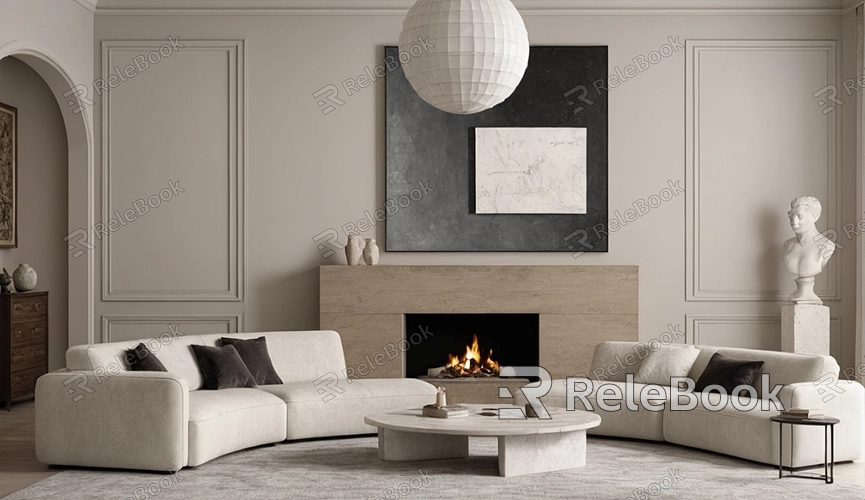How to Cut SketchUp Models into Separate Groups?
In the fields of architectural design, interior decoration, and other 3D modeling areas, SketchUp is a highly popular tool. However, as the complexity of your models increases, cutting them into separate groups becomes crucial. This not only enhances workflow efficiency but also makes future editing and adjustments easier. This article will provide a detailed guide on how to cut models into separate groups in SketchUp, along with some practical tips to help you better manage your design projects.

Understanding the Difference Between Groups and Components
Before diving into cutting models, it's essential to understand the basic concepts of "groups" and "components." In SketchUp, a group combines multiple elements into a single object, while a component is a reusable object. Simply put, groups are suitable for one-time-use elements, whereas components are for elements that need to be used multiple times.
Understanding the distinction between these two concepts helps you make informed choices when cutting your models. If you only need to separate a part of the model for one-time processing, you can create it as a group. If you need to reuse it in multiple locations, consider converting it into a component.
Selecting the Parts to Cut
The first step in SketchUp is to select the parts you want to cut. You can use the selection tool to click and drag to select a section of the model. Here are some tips for selecting:
1. Box Selection: Click and drag your mouse to create a box that encompasses all the elements you need.
2. Single Selection: Hold down the Ctrl (or Command) key to select multiple non-contiguous elements.
3. Select Similar Elements: If your model has many identical elements, use the "Select Similar" function to quickly select them.
Make sure the parts you select are the ones you wish to handle separately, as this will allow for the effective cutting of the model.

Creating a Group
Once you’ve selected the parts to cut, the next step is to create a group. Here’s how to do it:
1. In the toolbar, locate the “Create Group” button, which usually looks like a folder.
2. Click the button, or right-click the selected parts and choose the “Create Group” option.
3. At this point, you'll see the selected parts transformed into a new group, while the original parts remain unchanged.
After creating the group, you can manipulate it independently, such as moving, scaling, or rotating it. This not only reduces confusion but also makes the model easier to manage.
Cutting Multiple Parts
If you have several parts to cut into groups, you can repeat the above steps. However, to increase efficiency, consider selecting all the parts you need to cut together before creating a group. This approach speeds up the grouping process.
When working with large models, it’s advisable to cut in batches to avoid making too many changes at once, which could lead to unnecessary errors.
Organizing Your Model
After cutting your model into groups, it will become much tidier. But how can you effectively organize these groups? Here are a few suggestions:
1. Name Your Groups: Give each group a name for easy identification. Right-click the group, choose “Rename,” and enter the appropriate name.
2. Use Layers: Place different groups on separate layers to help you manage the model more clearly. You can divide layers by function or color.
3. Group Similar Elements: Put similar elements into the same group; for instance, keep all furniture in one group and all walls in another. This enhances the model's readability.
Editing and Adjusting Groups
After creating groups, you may need to perform further edits or adjustments. Editing a group in SketchUp is quite straightforward. Just double-click on the group to enter edit mode. In this mode, you can modify the elements within the group and click outside the area to exit editing once you're done.
Additionally, if you want to perform transformations on the entire group, simply select it and then move, scale, or rotate as needed. This operation is very flexible and helps you quickly adjust the model.
Exporting and Sharing Your Model
Once all parts of your model are cut into individual groups, you might want to export or share the model. In SketchUp, exporting a model is quite simple. Just click the “File” menu, select “Export,” and choose the desired format.
Exported models can be used in other software or shared directly with colleagues and clients. Make sure that the export options include all necessary groups to avoid missing any important parts.
By cutting SketchUp models into separate groups, you not only improve your workflow efficiency but also make managing and editing your designs much easier. Mastering this skill will greatly benefit your modeling work, allowing you to navigate your creative process with greater ease. Finally, for more high-quality 3D models and textures, be sure to visit the Relebook website to download the resources you need.
FAQ
Can I re-cut an existing group?
Yes. Simply double-click to enter the edit mode of the group, select the parts you wish to cut, and follow the steps to create a new group.
How do I merge multiple groups?
Select the groups you want to merge, right-click, and choose the “Merge Groups” option. This will combine the selected groups into a new one.
Why can't I move my group?
Ensure you are not in edit mode when trying to select the group. If you are in edit mode, exit it and try moving the group again.
Can I convert a group into a component?
Yes. Select the group, right-click, and choose the “Make Component” option, then you can name the component.
How do I delete unwanted groups?
Select the group, right-click, and choose the “Delete” option, or simply press the Delete key on your keyboard.

